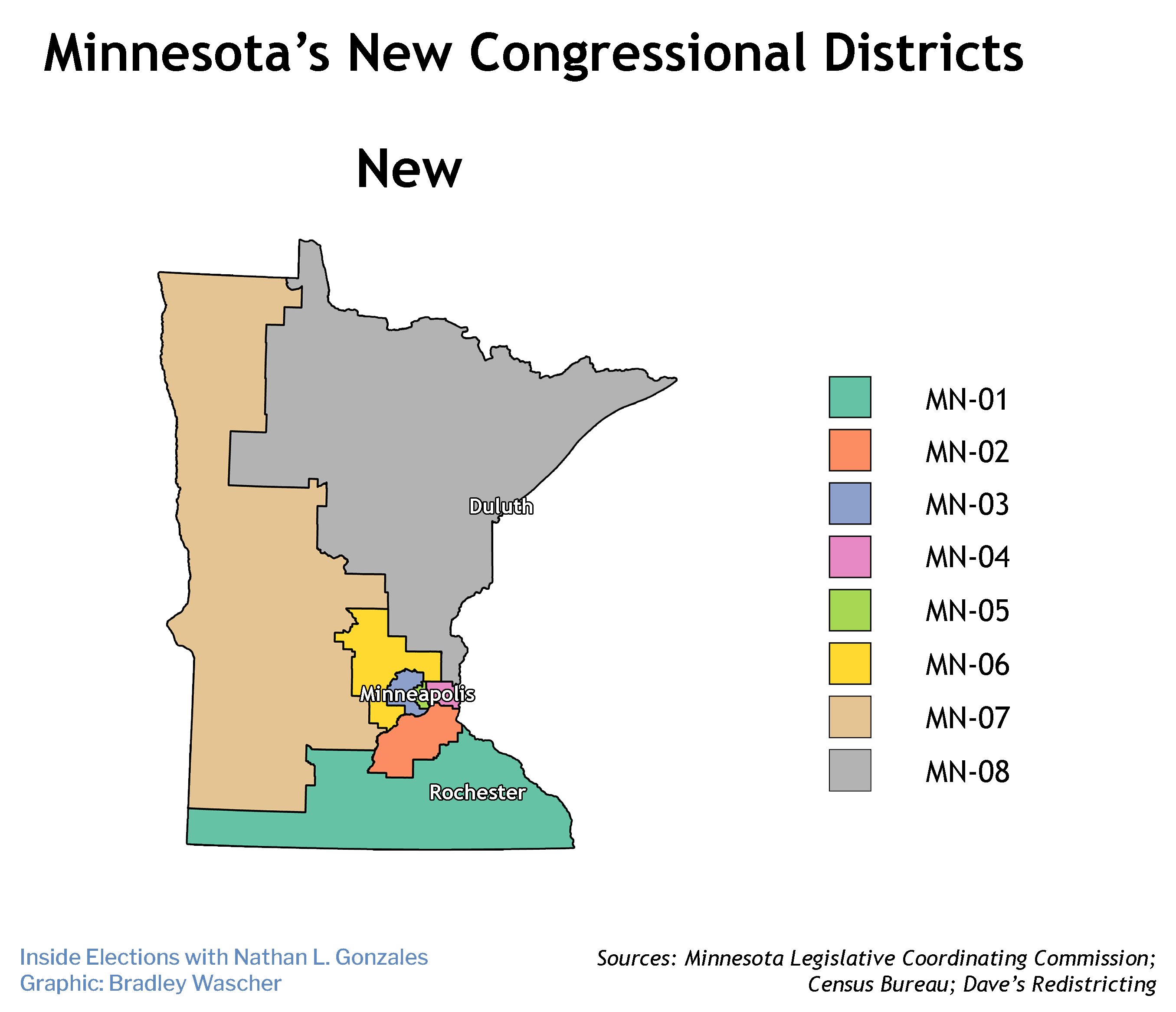In Minnesota, reapportionment cut a little too close for comfort. Had New York State counted just 89 more people in the 2020 Census, it would have retained its 27th seat — and Minnesota would have lost its eighth seat.
But that didn’t happen, and the Land of 10,000 Lakes will remain the Land of 8 Districts for at least another 10 years.
Because Democrats failed to retake the state Senate in the 2020 elections, control of redistricting was divided between the GOP-held upper chamber, and the Democratic governor and state House. From the outset, that meant the new map was more likely than not to come from the courts, rather than the legislature. That’s how it’s happened in Minnesota for every cycle beginning in 1990.
On Feb. 15, a panel appointed by the state Supreme Court revealed its map, which is largely a status quo update from the previous decade.
While some districts had to gain or lose population to get to parity, no seat saw its overall partisanship change significantly. The state is still home to four Republican, rural and exurban districts, three Democratic urban and suburban districts, and one competitive suburban district.
The state’s delegation is currently split evenly, 4D-4R. But Republicans will have a good chance to flip one Democratic-held seat in the fall and claim a majority of the delegation for the first time since 1980.
And a special election to replace the late Rep. Jim Hagedorn, a Republican, adds a layer of uncertainty to exactly what the makeup of the delegation will be come 2023.

1st District
The 1st District will actually play host to two elections this year: the regularly scheduled race in November, and a special election...

